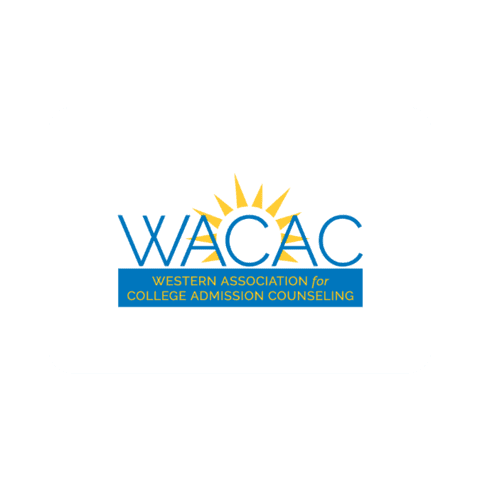Preparing for the SAT math section? Our blog provides an essential guide to understanding the unit circle, a key concept that frequently appears on the exam. We break down the unit circle into manageable components, explain its significance, and provide tips for solving trigonometric problems efficiently. Mastering the unit circle will not only boost your SAT math score but also enhance your overall math skills. Visit our blog now and gain the knowledge and confidence you need to tackle the unit circle and excel in the SAT math section.
Sitting at the Kitchen Table Surrounded By…
Okay, so you’re sitting down with those thick workbooks, ready to prepare for the SAT coming up in a matter of weeks. You’re trying to remember the math you learned in 8th grade while simultaneously attempting to figure out that concept from your sophomore year that you never really grasped. Oh, and you’re trying to recall those pesky unit circles, too. Do you even have to know how to use unit circles for the SAT, and what they are for in the first place? Let’s get into it.
It Can Feel Like a Lot to Learn
When you begin studying and preparing for SAT testing, there is often a lot of information coming at you quickly. Therefore, it’s important to be able to discern what information you actually need to consume, absorb, and learn for the long term. Empowerly is here to help you stay on track.
The Unit Circle
The unit circle is one of the more difficult math concepts students learn in high school. It’s a trigonometric concept that pops up in geometry, trigonometry, and calculus courses. Nonetheless, the simple fact that the unit circle is taught in the high school math curriculum does not mean that it’s something that most students master easily.
Is It Actually Imperative to Understand Unit Circles?
While it is important to understand how to use the unit circle if you want to score perfectly on the SAT, it’s not imperative that you understand this concept to do well on the exam. However, if you are aiming to gain admission to a tier university, every competitive edge you can gain against the competition is essential. An impressive math SAT score will certainly help your chances, and unit circles may be part of that score. Give yourself the best odds of success on the test day.
It’s Always a Good Time to Review Unit Circle Concepts
On one hand, there’s a pretty good chance that before you began this whole college preparation process you had absolutely no idea what a unit circle was. On the other hand, there’s a pretty good chance that unit circles might pop up in a class down the road. Ultimately, no matter where in high school math journey, unit circles are relevant. Whether you’re playing catch-up or getting ahead, this is just one of many reasons why it’s a good idea to gain a firm grasp of the concept now.
Getting a Perfect Score on the SAT
Have you been wondering how many people get a perfect score on the SAT? Is it even possible in the first place? Check out this post about how many people get a perfect score on the SAT from Empowerly to find out. Getting a perfect score can give you the competitive edge that you need to beat out the competition and get into the school of your dreams.
How Much of the SAT Could Cover Unit Circles?
Unit circles fall under the “Additional Topics in Math” category. This category takes up less than a fifth of the entire exam. This means that your odds of getting asked questions about unit circles are pretty slim. For these reasons, the SAT does not specifically test on unit circles often. When there are questions about unit circles, there aren’t very many. Instead, the Additional Topics in Math typically lean toward asking questions about lines, angles, shapes, measurements, and basic trig rather than unit circles. This is good news for students who feel a little bit less confident about solving problems that involve unit circles. Still, there’s no reason to ignore this concept and potentially throw points away!
Tap Into All Available Resources While Studying
Remember, for more challenging topics, you can always tap into the many resources available online. You can take advantage of the many ways to break down complex topics into more digestible pieces of knowledge. Your teacher may only know one or two ways to teach a topic, but there is a good chance that someone on the internet has the same questions you do. There’s just as good of a possibility that someone online has the answers you need.
Problem-Solving with Unit Circles
It is important to understand the patterns and the bigger picture when it comes to a unit circle, rather than simply memorizing the unit circle itself. One of the best aspects of math is that there’s hardly ever only one right way to solve a problem. In fact, great math teachers will allow you to solve problems in different ways as long as you end up with the right answer. Beyond that, the best math teachers will actually teach you multiple ways to go about solving a problem.
Here are a few tips explaining how to use unit circle strategies for the SAT. Let’s get into it.
A Few Things to Remember About Unit Circles
- Unit circles allow triangles to be measured out of 360 degrees rather than the standard 90. Remember that right triangles have 90-degree angles.
- They are often used in conjunction with coordinate planes, which makes it a lot easier to solve for unknown values.
- Remember that sine, cosine, and tangent are all based on the concept of a right-angled triangle.
- Always remember to reduce. This is a common theme among different math topics; the vast majority of the time, the best policy is to reduce. It makes it easier to solve equations and work with more manageable numbers.
- When you are looking at a unit circle with degrees and radians, it’s important to remember which unit you are using.
- Looking at any provided diagrams should help you get oriented when it comes to using unit circle strategies.
- Unit circles with degrees and radians allow you to solve for nearly any measure you may need since these two things measure angles.
- Memorizing the most common angles of the unit circle with degrees and radians is your best ticket to solving these problems quickly and accurately.
- Ratios of the sides of a triangle in relation to a given angle are typically referred to as “theta.”
- You typically find the circumference of a circle by using the formula 2(pi)r.
- This means that the unit circle has a circumference of 2(pi). This is a constant.
Hopefully, this has helped you to better understand how to use unit circle strategies so that you can ace the SAT and have the best chance at getting into your best-fit school.
The Best Ways to Draw Positive Attention to Your Application
Sometimes getting your academics together and raising your grades is the most important next step in your college application process. Other times, the wisest way to spend your time is by preparing for standardized testing. Of course, the best-case scenario happens to be that you do so well in both areas that each one can serve as a flashing arrow, striving to capture the attention of the admissions committee. No matter what, studying well and thoroughly understanding the subject matter at hand (like unit circles) will help you shine!
Really, Use Those Resources
Don’t forget to consult incredibly helpful free resources, such as Khan Academy and other YouTube videos, when you start to feel stuck or unsure how to solve a certain type of problem relating to unit circles. Your teacher(s) probably have different ways of teaching certain skills. There is a very good chance that someone online has already explained unit circles in a way that will make a lot more sense to you. Go ahead and use your own external resources while you are studying for the SAT! This is the time to gain all of the information you can, and it’s the time to fill any gaps in knowledge that you may have. Well, you’ll have almost everything. You obviously won’t have the luxury of the phone that’s probably sitting right beside you (or even in your hands) at this very moment when the time comes to sit down and ace that SAT.
Empowerly and Math Assistance (Check Out Our Archives)
Don’t hesitate to check out Empowerly’s mathematics archives for more helpful hints, tips, and tricks when it comes to math. Math isn’t everyone’s strong suit. That simply means that students need more support when it comes to learning, understanding, and retaining mathematical knowledge and skills.
Chat With Us Here At Empowerly
Now that a little of the pressure of learning about how to use a unit circle has hopefully been lifted off your shoulders, let’s talk about how Empowerly can help lift another load off your back. We’re talking about the college application process. You can actually consult with Empowerly specialists who have the ability to support you in reaching even your most ambitious goals. Empowerly has helped thousands of students with college admissions. If you are interested, don’t hesitate to schedule a free student profile review and get valuable insights from our enrollment team.
Empowerly helps students navigate their college admissions journey to top colleges with a 94% success rate. Talk to an enrollment specialist today and get started. It’s time that your hard work in high school pays off.


